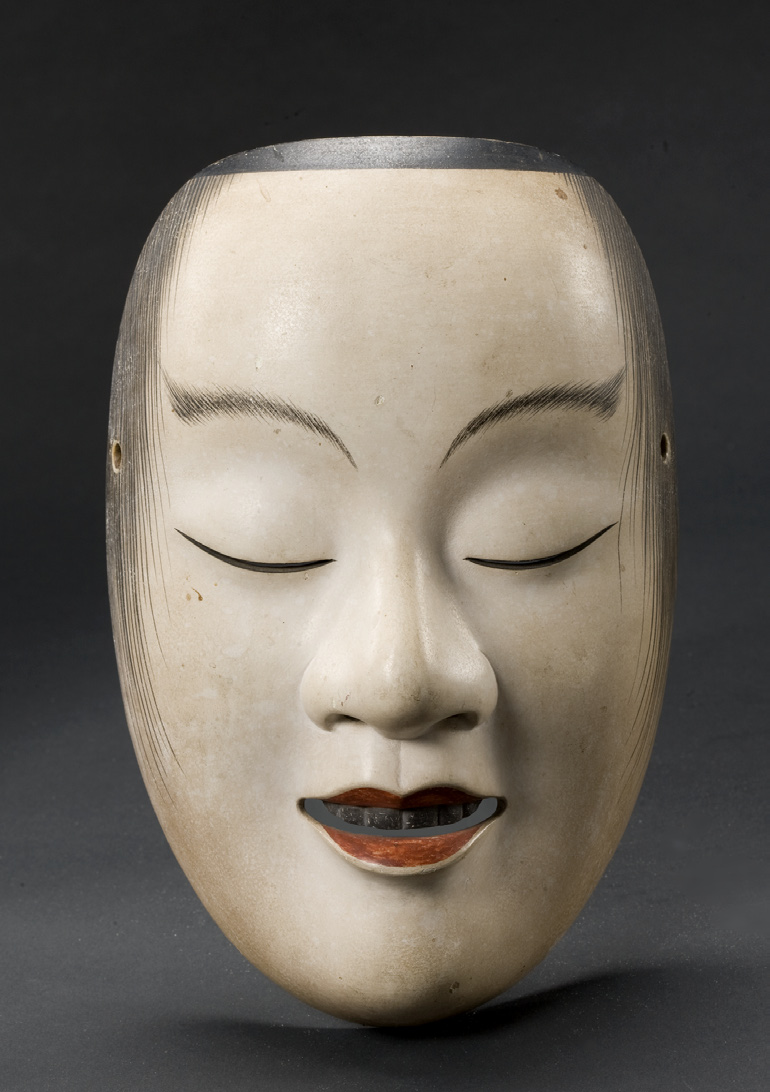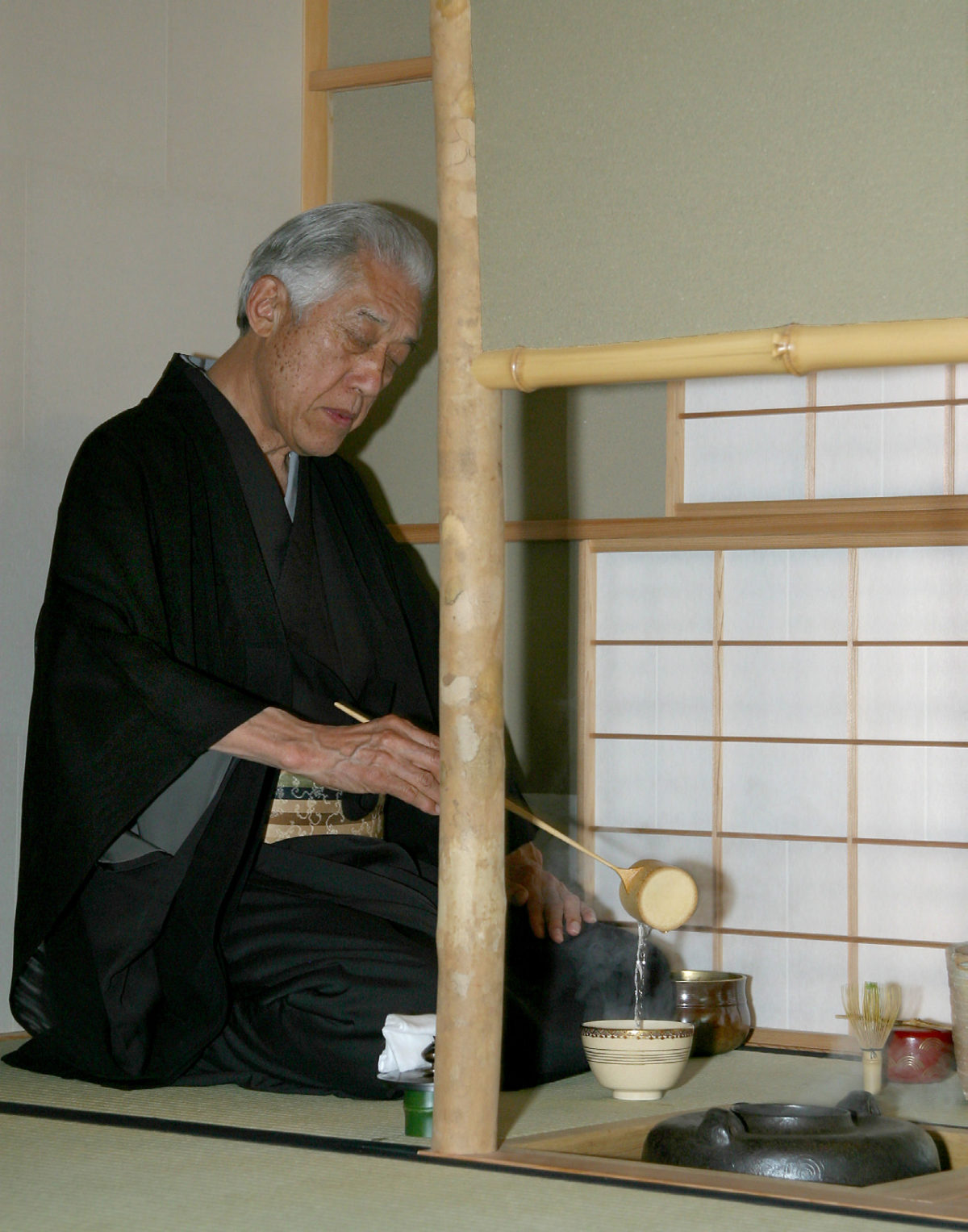Art of War and Art of Peace in Dc
In addition to superior strategic and military ability, nigh elite samurai were expected to exist versed in the cultural arts. The warrior'southward ideal residuum of military and creative skill is captured well in this clarification of the sixteenth centurydaimyoHosokawa Yusai (1534–1610): "Renowned for his elegant pursuits, he is a consummate human being combining arts [bun] and arms [bu] . . ." Learn more.

In addition to superior strategic and military ability, nearly aristocracy samurai were expected to be versed in the cultural arts. The warrior'southward platonic residue of military and creative skill is captured well in this clarification of the sixteenth century daimyo Hosokawa Yusai (1534–1610):
Renowned for his elegant pursuits, he is a complete homo combining arts [bun] and arms [bu]. A human of nobility, a descendant of the sixth grandson of the emperor Seiwa, he was a ruler endowed with awesome dignity and inspiring decorum…He built a splendid castle, which was majestic, beautiful and high…He discussed Chinese poetic styles and recited by heart the secret teachings of Japanese poetry…one
Minamoto Yoritomo, Japan'south first shogun, urged warriors not to brandish excessive interest in court culture, yet by the tardily thirteenth century literary pursuits—poetic composition and reading classic Chinese and Japanese texts—were already integral parts of warrior life. By the seventeenth century,the Regulations for Military Houseslegally required samurai to pursue such practices:
The arts of peace and war, including archery and horsemanship, should exist pursued singlemindedly. From quondam the rule has been to practice the "arts of peace on the left hand and the arts of war on the right"; both must be mastered.two
This accent on cultural skills grew from the samurai's demand to govern lands acquired through warfare. Simply put, literacy was required to dominion: to draft documents, samurai needed to take at least minimum skill in calligraphy and knowledge of literary conventions. Their power to participate in courtly arts like classical Japanese poesy (waka), strengthened the samurai's authority, lending nobility and prestige to warriors who frequented aristocratic circles. Like nobles, samurai often attended social gatherings where poems were recited, written, or exchanged. Samurai children were expected to set up for life by studying Chinese and Japanese literature—as well every bit Confucian texts—alongside martial skills like archery or horseback riding. Poems were used to utter prayers for victory in boxing, and to communicate with warriors from other regions.
Amid other pastimes, high-ranking samurai were oftentimes gorging connoisseurs of painting. Warrior patronage of painters and artisans advanced the visual arts throughout the menstruation of military rule, equally shoguns and daimyo vied to fill their mansions and castles with brilliantly colored screens and beautifully decorated objects for daily utilise. In addition to objects imported from Prc or pictures inspired by Chinese styles of painting, particular favorites were screens painted with scenes from famous battles, or other warrior pastimes such as falconry, horseracing, and dog chasing.
Nohtheater, a traditional form of dance-drama, was another cultural activeness enjoyed by the samurai. Often drawn from classic literary sources, Noh plays emphasize Buddhist themes, and focus on the emotions of a main character tormented by dear, anger, or grief. The warlord Toyotomi Hideyoshi famously both studied and performed in Noh plays himself, fifty-fifty while in the midst of a military campaign. Noh was taken so seriously that during the Edo period (1615–1868), "every daimyo household was required to maintain a full set of robes, masks, and musical instruments for the performance of No[h]….Daimyo vied in sponsoring No[h] actors, building stages, and acquiring robes and masks."3
Finally, many samurai were devoted to the "Way of Tea" (Chado,too known asChanoyu,lit. "hot water for tea"). At its simplest, tea is a gathering during which h2o is heated, tea is prepared and served, and conversation flows between host and guest(s). Initially warriors expert elaborate forms of tea, at times involving huge gatherings, tea identifying contests or day-long events in which meals and sake were also served. Hideyoshi and Nobunaga, two of Japan'due south almost powerful warlords, were both ardent collectors of tea utensils; Nobunaga is fifty-fifty known to accept awarded prized tea bowls to his vassals for loyal duty in battle. Under warrior patronage the tea master Sen Rikyu developed the simple, more intimate, and rustic form of tea practice that survives today in modern tea lineages.
1Inscription quoted in Yoshiaki Shimizu,Japan : the Shaping of Daimyo Culture1185–1868 (Washington DC: National Gallery, 1988), 78.
2 Buke Shohatto,quoted in Martin Collcutt, "Daimyo and daimyo culture," in Shimizu,Japan: the Shaping of Daimyo Culture,37.
iiiMartin Collcutt, "Zen Fine art in a Monastic Context: Zen and the Arts in Medieval Kenchoji," inAwakenings. Zen Figure Painting in Medieval Japan,ed.Yukio Lippit and Gregory Levine (New Haven: Yale University Press, 2007), 41.
Source: https://education.asianart.org/resources/bu-and-bun-the-arts-of-war-and-peace/

0 Response to "Art of War and Art of Peace in Dc"
Post a Comment